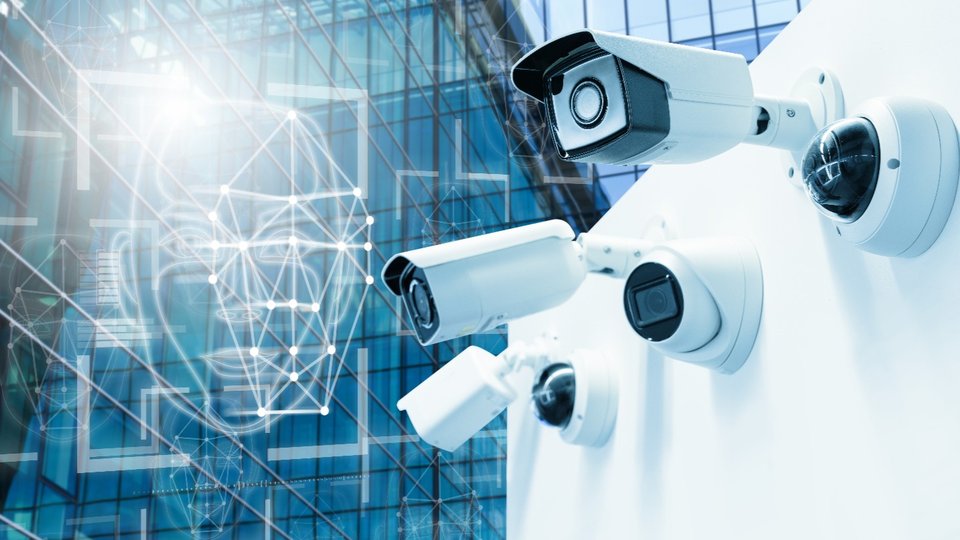Branch Transformation
Can AI make banks safer?
Banks are beginning to use AI in many different ways, such as fraud prevention, credit card applications and more. But can AI make branches and ATMs safer?

September 2, 2025 by Bradley Cooper — Editor, ATM Marketplace & Food Truck Operator
Much of the excitement around AI revolves around Generative AI. While Gen AI can be useful, it has its limits — especially due to the problem of AI hallucination, biases and more.
Banks are beginning to utilize AI in many different ways, such as fraud prevention, credit card applications and more. Banking AI is also growing on the customer experience level, as chatbots continue to make a big impact in digital banking.
But what about on the branch side? Can AI integrate within the physical space to make it more efficient or even safer?
Branch efficiency
Felix Nater, a security consultant, told ATM Marketplace in a video interview, that AI can play a very significant role in the branch, if used properly.
"We must assume that AI is an evolving technology that's probably never going to be obsolete," he said. "Therefore it's incumbent upon local branches to lead their way in understanding their own local missions so they can integrate AI."
For example, branch managers and decision makers can look at ways to improve operational efficiencies with AI. This can take small forms such as smart energy management and bigger ones like security.
A blog by HGS CX points to IoT sensors that can integrate with the branches' HVAC system to automatically control lighting and temperature based on occupancy and weather to ensure energy efficiency.
Branch security
Security is perhaps the biggest way that AI can impact the branch, especially when integrated with the bank's existing security systems and self-service devices.
ATMs in particular can benefit from AI in a big way. The crime wave that emerged in 2020 against ATMs has shown no signs of slowing down, and so branches need more AI tools than ever to combat this.
"AI models can analyze vast transaction data to detect suspicious activities like fraudulent banknotes and other forgeries," Scott Barronton at Diebold Nixdorf said in a blog post.
Cameras located above an ATM can also play a role in this. Rather than simply statically recording interactions, they can utilize data to detect suspicious activity while it is happening.
In a podcast with ATM Marketplace, Joseph Parrillo, leader in the security solutions division at Cook Solutions Group, discussed how modern cameras can utilize rule based AI analytics to avoid false positives and only set off protective measures when necessary.
For example, these cameras would only go off when a human is detected in a certain time frame, such as from 9:00 p.m. to 4 a.m. who is lingering near the ATM for longer than a certain amount of time.
"I want it to be a person, not an object, not a dog, not a cat, a person that is in this area for more than two minutes. You can then trigger an output, like trigger the sprinklers, set off a fire alarm, text my cell phone," Parrillo said.
It can also be integrated within an ATM, such as a loitering device that can interact with other components. This, in turn, can create a safer environment for everyone.
AI enables proactivity
Nater believes the real power of AI in these situations, whether outside or inside the branch, is to be proactive with issues rather than reactive. This is the case not just with criminals, but also conflict management and violence prevention.
"As it relates to the ability to detect threats, improve communications during emergencies, and facilitate an efficient response, AI can help you develop a workplace violence prevention program, conflict management approach that anticipates behaviors in advance of the actual event," Nater said.
He described a situation where an employee is having an issue, perhaps due to sudden more aggressive behavior. That data can be entered into an incident management system, and the AI can " focus specifically on the in the employee's individual problems and concerns, allowing you to be proactive rather than reactive in anticipating those needs and deescalating before escalation."
For example, an AI tool can take in potential points of conflict in the culture or among the employees and suggest action plans to resolve that issue.
However, Nater added that despite all of the promise of these systems, they aren't perfect and relying on them too much can lead to trouble.
"If you rely on AI to do it all for you, you're going to have some issues and concerns. It will lead to complacency. for example, a false sense of security," Nater said. "You're also going to rely on AI to tell you things you need to be aware of, thereby making you feel as though that the system is more capable than you are."
For example, Nater cited the example of when the AI tools don't detect unusual behavior or someone enters the branch and doesn't set off any warning bells. He said it's a similar issue to hiring a security consultant and expecting the consultant to know everything.
"You need the human element to override the AI," he said.
About Bradley Cooper
Included In This Story
Cook Solutions Group
Simple | Secure | Service | Solutions. From ATM sales, support, and service to enterprise security solutions with Next Generation technology. Think CSG First. We Make it Happen!
Diebold Nixdorf
As a global technology leader and innovative services provider, Diebold Nixdorf delivers the solutions that enable financial institutions to improve efficiencies, protect assets and better serve consumers.













